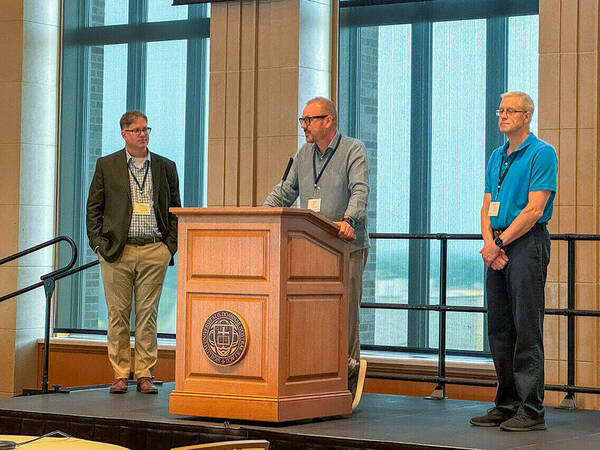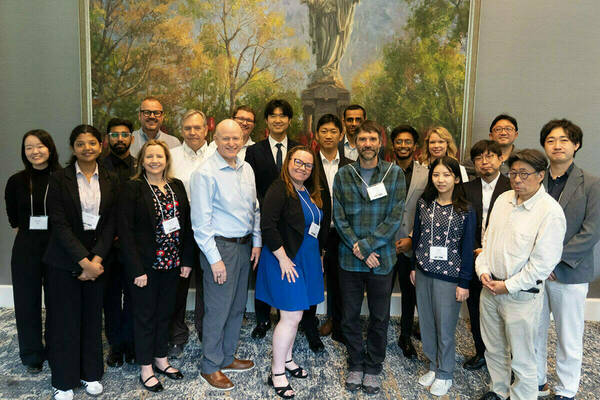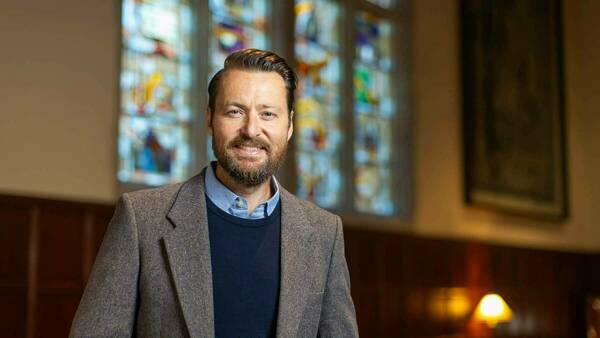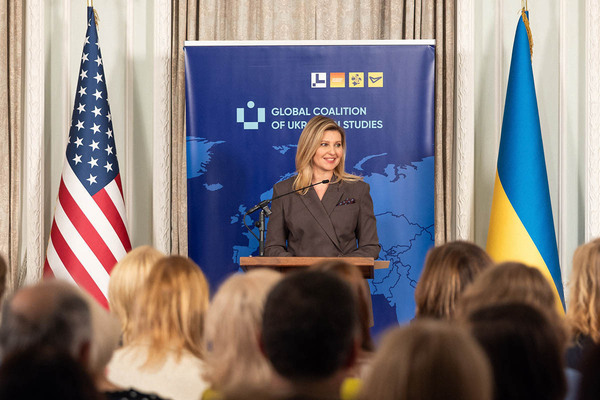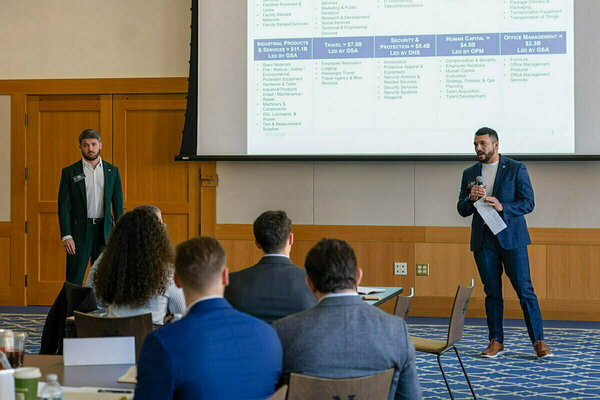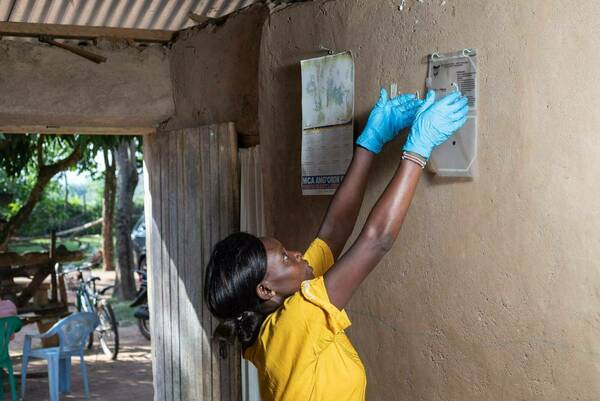Notre Dame Center for Research Computing and College of Engineering leaders host 34th ACM International Symposium on HPDC
Over the summer, the University of Notre Dame hosted the 34th ACM International Symposium on High-Performance Parallel and Distributed Computing (HPDC). HPDC brought together more than 100 attendees from around the world to the University for workshops, tutorials, paper and poster sessions, and keynote speakers.
Jarek Nabrzyski, the U.S. National Science Foundation (NSF) Cyber SMART executive director, site director for the University of Notre Dame, co-principal investigator of NSF CI Compass, and founding director and professor of practice at Notre Dame’s Center for Research Computing, co-chaired the event with Douglas Thain, professor of computer science and engineering, within the College of Engineering at the University of Notre Dame.
The event brought together both academic and industry leaders to share ideas and findings, with keynote speakers that inspired collaborative discussion sessions.
“It was a pleasure to bring together national and international leaders and students in HPDC together for the first time at the University of Notre Dame. The research we observed, and fellow researchers we engaged with, will help shape the future of
both high-performance computing (HPC) and HPDC,” said Nabrzyski.
The four day symposium featured multiple keynote speakers, who gave presentations and hosted discussions with attendees. Andrew Jones presented “Has HPC changed forever? And what is next?” Jones leads the Future Capabilities for Supercomputing and artificial intelligence (AI) within Microsoft Azure Engineering. Fred Chong, Seymour Goodman professor in the Department of Computer Science at the University of Chicago, presented, “Physics-Aware, Full-Stack Software to Accelerate Practical Quantum Computing.”

“Assembling the top minds - both new and established - in the HPDC space gives us the opportunity to convene with colleagues and gain new perspectives on how to begin solving critical challenges,” said Thain. “I am excited to see the work unfolding that is critical to advancing scientific computing and the services it supports.”
Each year beginning in 2012, the conference presents the HPDC Achievement Award to an individual who has made long-lasting and influential contributions to the foundations and/or practice of the field of high-performance parallel and distributed computing. This year, the 2025 HPDC Achievement Award recipient was Michela Taufer, Jack Dongarra Professor in High-Performance Computing (HPC), at the University of Tennessee, Knoxville. During the symposium, Taufer participated in the panel discussion: “Tomorrow’s HPC/HPDC: Golden Age, Cambrian Explosion, Both, Something Else?” led by Peter Kogge, Ted H. McCourtney Professor of Computer Science and Engineering at Notre Dame. Panel participants included Tom Conte, associate dean for research; professor, Computer Science and Electrical & Computer Engineering, Georgia Institute of Technology; Siddharth Joshi, assistant professor, computer science and engineering, University of Notre Dame; and Scott Pakin, scientist at Los Alamos National Laboratory. The panel posed observations on where in the current historical timeline of computing the current technology and approaches to them are.

Learn more about the 2025 event by visiting the event website, and watch for information for the 35th HPDC Symposium here: https://hpdc.sci.utah.edu/
Learn more about the CRC by visiting: crc.nd.edu
About Cyber SMART
NSF Cyber SMART is a U.S. National Science Foundation (NSF) Industry-University Collaborative Research Center (IUCRC). Its participating research institutions include Georgetown University, the University of Notre Dame, the University of Technology Sydney, and Virginia Tech.
To learn more about Cyber SMART, please visit cybersmartcenter.org
Contact: Christina Clark, Research Communications Specialist
Cyber SMART / Notre Dame Research / University of Notre Dame
cclark26@nd.edu / 574.631.2665
Originally published by at cybersmartcenter.org on September 23, 2025.
Latest Research
- NSF Cyber SMART’s fall meeting shapes fifth year of project, legacy and future plans, and adds new memberThe U.S. National Science Foundation (NSF) Cyber SMART center gathered for its fall meeting on the University of Notre Dame campus this September. The meeting served as a checkpoint with progress reports and new projects from research leads and students…
- Slavic and Eurasian studies professor wins Humboldt fellowship to research how Russia’s religious past shapes its presentWhen Russia invaded Ukraine on Feb. 24, 2022, Sean Griffin realized his second book needed a new title. Griffin, an associate professor in the University of Notre Dame’s Department of…
- Notre Dame’s R.I.S.E. AI Conference builds interdisciplinary collaboration to inform human-centered artificial intelligenceAs artificial intelligence (AI) transforms nearly every sector of society — from healthcare and education to governance and global development — a critical question emerges: How can we conscientiously design and deploy these powerful technologies to positively impact society? This…
- University of Notre Dame joins the Global Coalition of Ukrainian StudiesThe University of Notre Dame has joined the Global Coalition of Ukrainian Studies after signing a Memorandum of Cooperation (MOC), formalized on September 24, 2025, at the Ukrainian Institute of America in New York City. Notre Dame joined four other American…
- The University of Notre Dame’s Mendoza College of Business and Industry Labs team up to inspire national security manufacturing competitiveness in the regionThe South Bend - Elkhart Region is full of manufacturing companies that are poised to grow, and Executive Master of Business Administration (EMBA) and Master of Business Administration (MBA) students at the University of Notre Dame are finding innovative ways to contribute to that growth. Earlier…
- Notre Dame research informs WHO conditional recommendation for spatial repellents in malaria vector controlThe World Health Organization (WHO) recently announced a “conditional recommendation” for spatial emanators, also known as “spatial repellents,” in the fight against malaria. This key determination was informed by spatial repellent studies that included the Advancing Evidence for the Global Implementation of Spatial Repellents (AEGIS) Project in Kenya, led by the University of Notre Dame and funded by Unitaid. The findings from this particular study were recently published in The Lancet.



